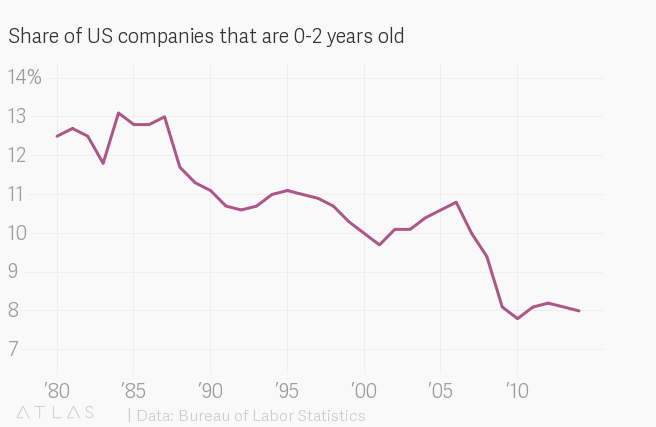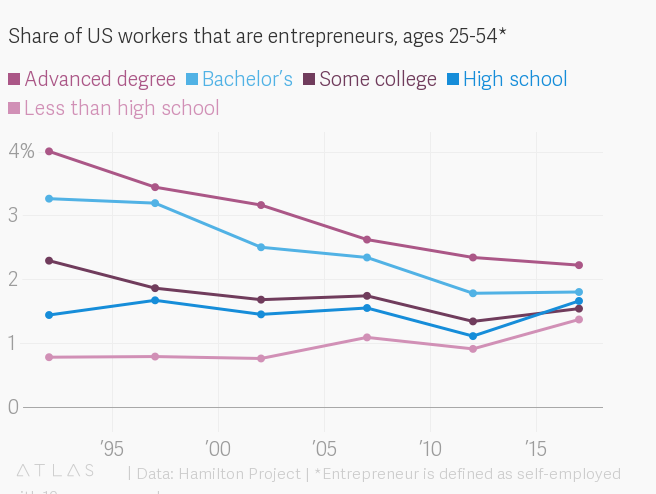Source: Jobs are plentiful, so why aren’t wages rising? | Quartz, by Dan Kopf
RE: Labor Market Concentration (pdf) by Jose Azar, Ioana Marinescu, and Marshall Steinbaum
Follow-up: Concentration in US Labor Markets: Evidence From Online Vacancy Data (pdf) by José A. Azar, Ioana Marinescu, Marshall I. Steinbaum, and Bledi Taska
Using 2011 data from the job site CareerBuilder, the researchers calculate labor market concentration in cities and industries and show that the average market is highly concentrated. They also show that this concentration is associated with lower wages.



